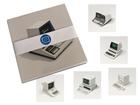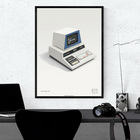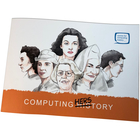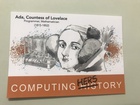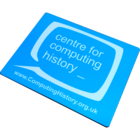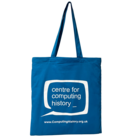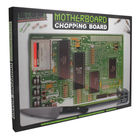John Simmons
|
John Simmons 1902-1985 After gaining a first class degree in Mathematics from Cambridge University John Simmons was recruited by George Booth, J Lyons & Co company secretary as a management trainee and statistician with a brief to review and develop the Lyons business processes. Under his tutelage many innovations to business processes were introduced and in 1932 he established the Systems Research Office.
In 1947 he sent two of his managers to the USA to study if Lyons could learn from American business processes. The outcome of the visit was the famous Standingford/Thompson report suggesting the possibility of computers as an engine for making the company more efficient. He used his own reputation and authority to endorse the idea and the resulting collaboration with Cambridge University and the EDSAC project to build LEO. He was appointed to the Lyons Board in 1954 as an Employee Director and a year later as a full Director. His reputation in the business world was an important factor in the establishment of LEO, the product of a catering company, as one of the leading computer suppliers in the UK and further afield.
A biographical sketch can be found on pages 209 - 210 of Peter Bird’s book LEO: the World’s First Business Computer.
John Simmons wrote: 'LEO is to the thinking of a manager as a grammar book is to the words of a speaker ... The use of LEO brings a new freedom and power to managerial thinking and decision making and ... a means of unambiguous communication.' Brighton College published an Obituary upon John Simmons' death and he has an entry in the Oxford Dictionary of National Biography, (ODNB) written by Georgina Ferry and published online September 2005. David Caminer adds: (Handwritten notes by David Caminer in preparation for his Pinkerton Lecture and transcribed by his daughter Hilary, hon. secretary LEO Computer Society January 2021. Words in brackets below are guesses at what was on the original manuscript.) This may well be the last time that we of the small band who conceived the first business computer, built it and first put it to work. And so it seems appropriate to put aside reticence for a moment and to say a few concise words about my colleagues. First then to Simmons. I have already spoken about him as the architect of Lyons office systems and (its) infrastructure. Without the enormous respect that he had gained from ‘the family’ as the controlling group of the Company was known, it is more than unlikely that LEO would have been proceeded with. He was known as a man who could be relied upon utterly and that when he made a proposal it had been completely thought through and would be carried to fruition, within a fixed time- frame and within budget. He was confident enough to advise the family of his intentions more than he needed to do. He believed very firmly in carrying everyone along with him and when LEO was actually being built he made certain that it should not be regarded as a Frankenstein and first invited all the management and supervisors of the offices to see it in progress. He promised that no one would lose their job because of it, arguing that it could take time for the Computer to replace labour and by that time there would be natural wastage. He himself was a formidable person. He had glacier blue eyes that were transfixing. He was very quietly spoken. I don’t remember him ever raising his voice. He was a tidy man in every sense. I recall his large mahogany desk. Always clear when we entered his room. He would then take the paper to be discussed from his top right hand drawer. It was always there, in place. His questions were searching/He was not always satisfied with the answers, but his natural courtesy did much to check his impatience. If we didn’t altogether agree with what was being proposed, he would smile rather thinly and declare ‘I hear what you say!’ If we were unwise enough to continue on this same track, he would repeat ‘I hear what you say’ this time with a note of resignation and dismissal. He was a totally logical man. Thinking the impossible was no problem for him as long as it could be logically supported. He brought his mathematical disciplines to his management chair. These were not just … but a continuum in his style of thought. John Simmons was a very private man. He was always the captain of the ship, but was not at all well known except to his senior officers. Many working in his large offices would not have been able to recognise him. He only very seldom ventured onto the shop floor. He was the son of missionaries and, without wearing his faith on his sleeve, we were very aware of the responsibility he bore for the people working for him. He was particularly conscious of the situation in which he had placed the small army of machine operators, all girls and women that had grown up. They were the counterparts of the operators in the continuous band factories, but as he noted, while those within factory operations could chat while they carried out their repetitive operations, the accounting … or … …groups had to keep their minds on the work all the time. When he discovered it, I don’t know, but he found that in the drive for efficiency, he had implanted drudgery in the offices. He quickly saw the potential of the computer to eradicate that drudgery and he seized it. Books Written by John Simmons :Articles Written by John Simmons :
|
|


